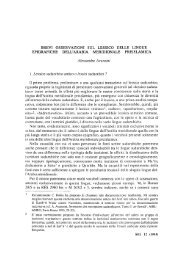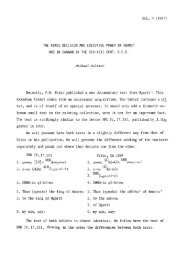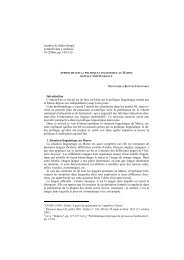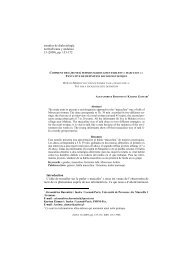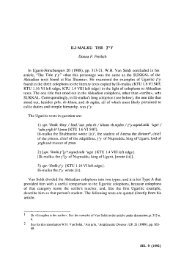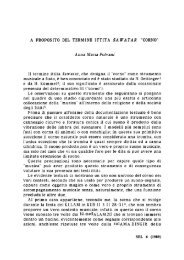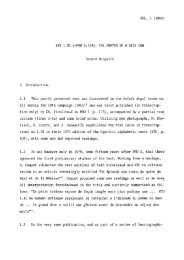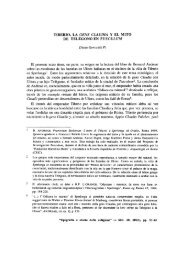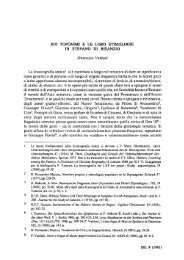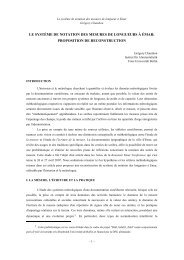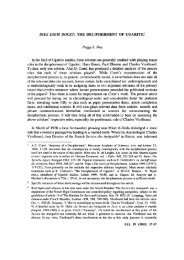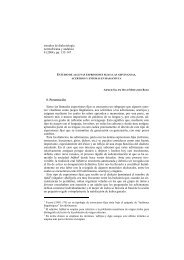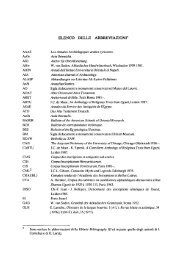estudios de dialectología norteafricana y andalusí 10 - Instituto de ...
estudios de dialectología norteafricana y andalusí 10 - Instituto de ...
estudios de dialectología norteafricana y andalusí 10 - Instituto de ...
You also want an ePaper? Increase the reach of your titles
YUMPU automatically turns print PDFs into web optimized ePapers that Google loves.
Segundas adiciones y correcciones al DAI 163<br />
amayn), < neoár. attaw$amayn, i<strong>de</strong>ntificación confirmada por Kunitzsch 1961:22;<br />
altannyn “serpiente”, con las var. tan(n)in, ten(n)in y Tennyn, < ár. atinn°n,<br />
i<strong>de</strong>ntificado por Kunitzsch 1961:68 y 114 con su sinónimo alayyah, nombre <strong>de</strong><br />
ciertas estrellas <strong>de</strong>l Dragón; (al)taur, con las var. c/çaur, < ár. a‡‡awr “el toro”, o<br />
sea, Tauro, confirmado por Kunitzsch 1961:22; <strong>de</strong> Vázquez&Herrera 1989:143,<br />
(al)tebegi y althebegi “tumor flácido” < ár. tahabbuj; ibí<strong>de</strong>m, p. <strong>10</strong>9, altemem/nel<br />
“nerviosismo” < ár. attamalmul, y alterbel “hinchazón” < ár. attarabbul; ibí<strong>de</strong>m, p.<br />
126-127, alterharharha “niñez” < ár. attara#ru#; alterhel v. altherel; <strong>de</strong><br />
Vázquez&Herrera 1983:174, althafi “una <strong>de</strong> las dos membranas sobre el vientre” <<br />
ár. a††åf°; ibí<strong>de</strong>m, althaharizi “oquedad” < ár. attajw°f; <strong>de</strong> Vázquez&Herrera<br />
1989:<strong>10</strong>9-1<strong>10</strong>, (al)tharas, alteref, altarfat(i) o taraxen “sor<strong>de</strong>ra” < ár. a††arafi,<br />
aunque pue<strong>de</strong> haber confusión con altarfat(i) “mancha <strong>de</strong> sangre en el ojo” (v.<br />
supra); ibí<strong>de</strong>m althecaregi, almethacaregi o techeregiet “ulceración” < ár.<br />
attaqr°, y p. 34, althedi “mama” < ár. a‡‡ady; altfetit v. alfetit; altheeltil v.<br />
altualil; Vázquez&Herrera 1989:<strong>10</strong>9-1<strong>10</strong>, althendue o altherduc “región pectoral”<br />
< ár. a‡‡anduwah; ibí<strong>de</strong>m, pp. 1<strong>10</strong>-111, altherel, trehel, alterchel, almethrelin o<br />
teredinis “tumor blando” < ár. attarahhul196 ; ibí<strong>de</strong>m, p. 198, althamari “electuario<br />
<strong>de</strong> dátiles” < ár. attamar°; ibí<strong>de</strong>m, p. 199, althamarich “fricción” < ár. attamr°x;<br />
ibí<strong>de</strong>m, p. 112, (al)tochme, althoeme, tochme y tochamie “indigestión” 197 < ár.<br />
attuxamah; ibí<strong>de</strong>m, p. 113-114, althaun, altho(ho)in, alt/choboin, taon, thabun y<br />
thahaum “peste” < ár. a††å#¤n; ibí<strong>de</strong>m, p. 114, althute y susati “enfermedad<br />
semejante al carbunco” < ár. att¤‡ah, lit. “mora”; Altephil v. atifells.<br />
p. 2<strong>10</strong>: en altramuz añadir el ast. altamuz; hay que insertar, <strong>de</strong><br />
Vázquez&Herrera 1985b:<strong>10</strong>8, aluathi “contorsión” < ár. alwa‡y198 ; alui v. allui; <strong>de</strong><br />
Vázquez&Herrera 1989:199, aluthel como var. <strong>de</strong> alu<strong>de</strong>l199 ; ibí<strong>de</strong>m, p. 115,<br />
altu/ialil, altheeltil, teli/ul y teilulae “verrugas” < ár. a‡‡a$ål°l(ah) 200 ; altumar v.<br />
alchamar; en albará2 , <strong>de</strong> GP 22, albaraz y sus var. <strong>de</strong> GP 52, aluaraç/z; aluath v.<br />
alnata; aluarda v. albarda; aluardan v. albardà; aluar<strong>de</strong>ngi v. alguar<strong>de</strong>negi;<br />
aluaz, <strong>de</strong> GP 52, < ár. alwaßl “la conexión”, nombre, según Kunitzsch 1961:116, <strong>de</strong><br />
un paraje entre ciertas estrellas <strong>de</strong> Sagitario que constituye la 20ª mansión lunar; <strong>de</strong><br />
GP 75, aluatia v. betya; <strong>de</strong> DO 215, aluazil v. aguasil; el hápax leo. aluataroni<br />
“tela preciosa” < neoár. waflarån°, gentilicio <strong>de</strong> su lugar <strong>de</strong> proce<strong>de</strong>ncia, Wa d år,<br />
cerca <strong>de</strong> Samarcanda, aunque prob. con el sufijo {-ån°}, frecuente en voces no ár. 201 ;<br />
<strong>de</strong> Vázquez&Herrera 1989:116-117, (al)uchar “sor<strong>de</strong>ra” < ár. alwaqr; <strong>de</strong> LHP 44,<br />
aluçuecs, probable errata por *alaçuac(s) “zocos”, según Corriente 2004b:76 y, <strong>de</strong><br />
nuevo <strong>de</strong> DO 215, aluardan v. albardà, aluaroc(h/o) y aluoroc v. albaroque;<br />
aludacha/i y alud(h)a v. algrada; <strong>de</strong> Vázquez&Herrera 1989:117, aludi “secreción<br />
prostática tras el coito” < ár. alwady; aluoroço v. alborozo, don<strong>de</strong> se añadirá<br />
también aluoroz y los <strong>de</strong>r. alu/boroçar y alu/orosçamiento; insértese alugen v.<br />
196<br />
Pero las autoras señalan posible confusión con alterbel, q.v. Aun hay en<br />
Vázquez&Herrera 1983:174 una var. armethrelin, que las editoras interpretan como<br />
“fláccidos”, sin duda a causa <strong>de</strong> su apariencia <strong>de</strong> participio.<br />
197<br />
Var. altoeme en Vázquez&Herrera 1985b:<strong>10</strong>8.<br />
198<br />
Por wa‡$, y no corrupción <strong>de</strong> luw°, como piensan las editoras.<br />
199<br />
Sin perjuicio <strong>de</strong> las reservas que allí se hacen acerca <strong>de</strong> que esta voz sea realmente<br />
arabismo.<br />
200<br />
De las cuales, teilulae refleja el sg. and., y las restantes, o bien el , o el pl.<br />
201 V. Wright 1859:I 153.



